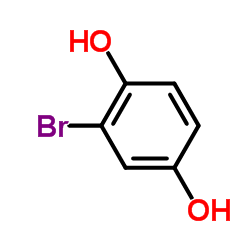2-Bromohydroquinone-induced toxicity to rabbit renal proximal tubules: evidence against oxidative stress.
R G Schnellmann
文献索引:Toxicol. Appl. Pharmacol. 99(1) , 11-8, (1989)
全文:HTML全文
摘要
2-Bromohydroquinone (BHQ) plays an important role in bromobenzene-induced nephrotoxicity and is a model toxic hydroquinone. Since BHQ has a quinone nucleus and various quinones have been shown to produce cytotoxicity via oxidative stress, the goal of this study was to determine whether BHQ produced cytotoxicity in a suspension of rabbit renal proximal tubules via oxidative stress. t-Butyl hydroperoxide (TBHP), an agent known to produce cytotoxicity via oxidative stress in this preparation, was used as a positive control. BHQ decreased tubular glutathione disulfide content whether glutathione reductase was inhibited or not. Inhibition of glutathione reductase did not result in the potentiation of BHQ-induced mitochondrial dysfunction or cell death. In contrast, TBHP increased tubular glutathione disulfide content. TBHP-induced increases in glutathione disulfide content, mitochondrial dysfunction, and cell death were potentiated when glutathione reductase was inhibited. Unlike TBHP, BHQ did not initiate lipid peroxidation nor was the antioxidant butylated hydroxytoluene protective. However, BHQ and TBHP both increased sodium cyanide-insensitive oxygen consumption. These results suggest that BHQ may undergo "redox cycling," but BHQ-induced mitochondrial dysfunction and cell death are not due to oxidative stress.
相关化合物
| 结构式 | 名称/CAS号 | 分子式 | 全部文献 |
|---|---|---|---|
 |
2-溴对苯二酚
CAS:583-69-7 |
C6H5BrO2 |
|
Dihydroxylated mercapturic acid metabolites of bromobenzene.
1992-01-01 [Chem. Res. Toxicol. 5(4) , 561-7, (1992)] |
|
Inhibition of respiration in rabbit proximal tubules by brom...
1986-01-01 [Adv. Exp. Med. Biol. 197 , 911-7, (1986)] |
|
Cellular toxicity of bromobenzene and bromobenzene metabolit...
1986-05-01 [J. Pharmacol. Exp. Ther. 237(2) , 456-61, (1986)] |
|
Synthesis and nephrotoxicity of 6-bromo-2,5-dihydroxy-thioph...
1988-07-01 [Mol. Pharmacol. 34(1) , 15-22, (1988)] |
|
Co-oxidation of 2-bromohydroquinone by renal prostaglandin s...
1987-01-01 [Drug Metab. Dispos. 15(6) , 801-7, (1987)] |